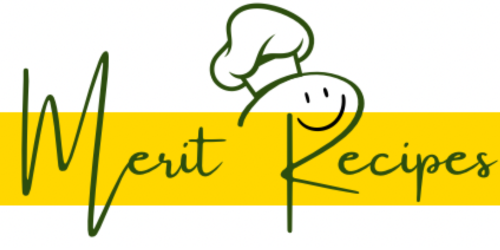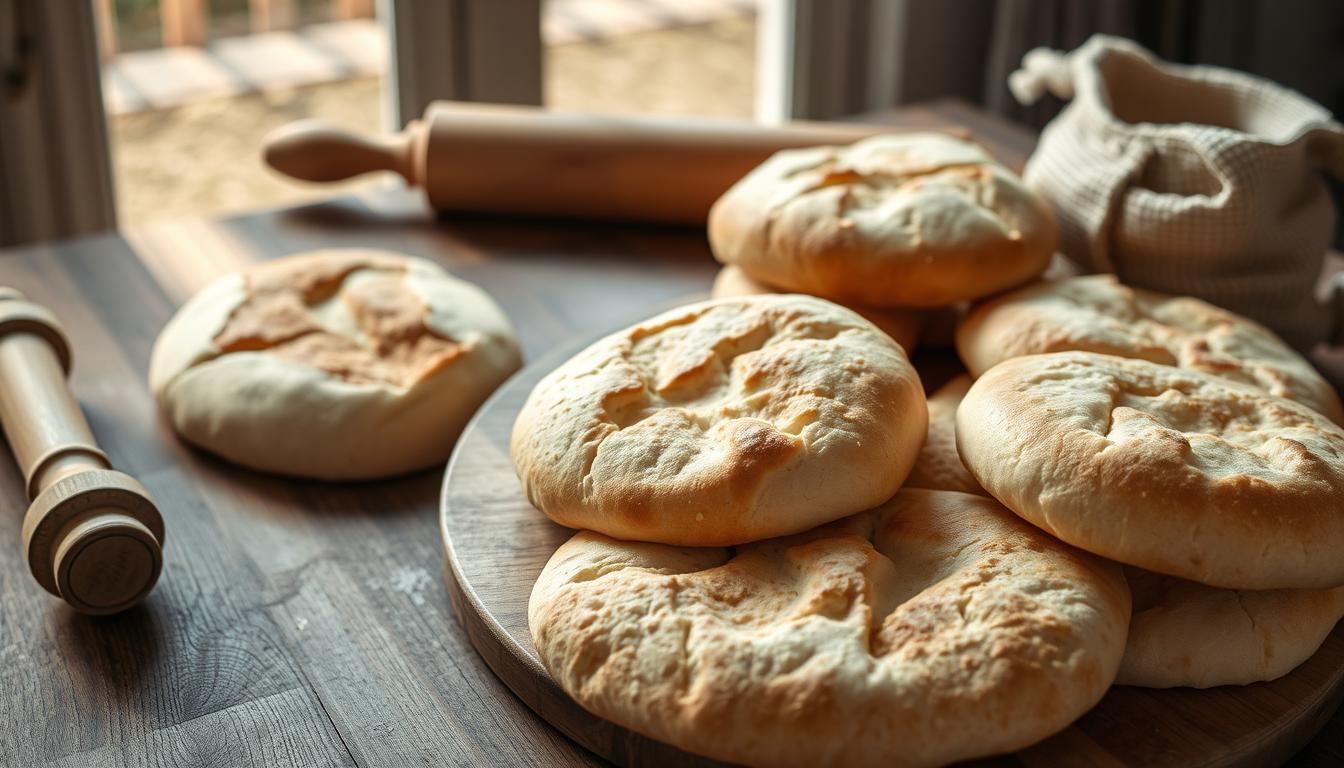Unleavened Bread Recipe: Every family has a special recipe that connects us to our past. For me, unleavened bread is more than a simple recipe. It’s a bridge between tradition and simplicity, turning simple ingredients into magic.
Unleavened bread is incredibly easy to make. With just a few ingredients, you can create a bread that has fed communities for centuries. It’s perfect for both experienced bakers and beginners, inviting you to discover the joy of bread-making.
Imagine making a bread in just 30 minutes. It needs only a few ingredients and connects you to ancient traditions. This unleavened bread is a journey through time and taste.
Understanding Unleavened Bread and Its Cultural Significance
Unleavened bread has a deep history and spiritual meaning that spans thousands of years. It connects cultures through a simple yet powerful food.
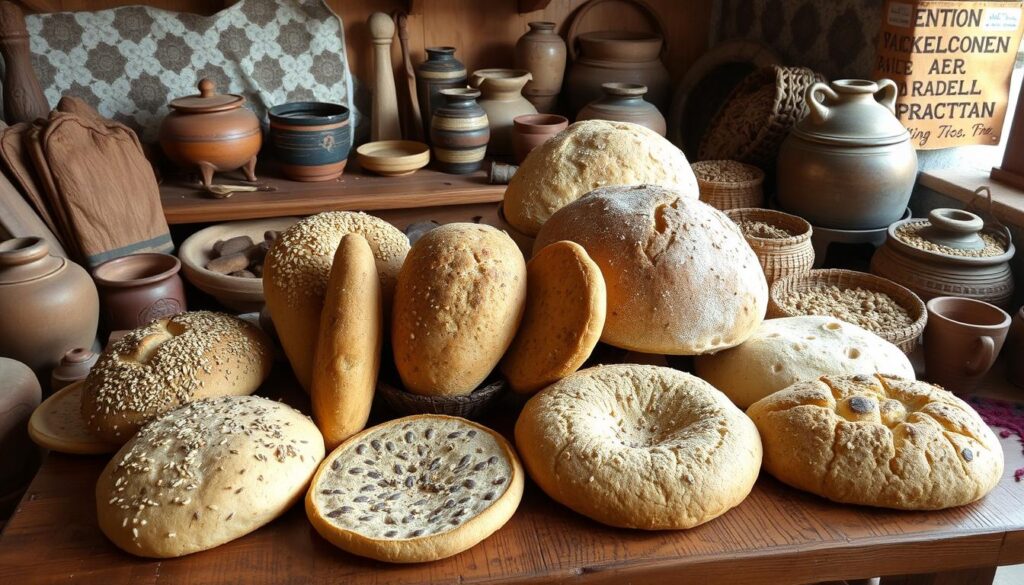
Unleavened Bread Recipe: Biblical Origins and Traditional Uses
In biblical traditions, unleavened bread is more than just food. It’s a key part of Passover, celebrated in March or April. Jewish communities eat this bread to remember the Exodus. Yeast or leaven symbolizes sin, making unleavened bread a spiritual choice.
- Passover starts on the 14th day of Nisan in the Jewish calendar
- The Feast of Unleavened Bread lasts seven days
- Both the first and last days are Sabbaths
Modern Applications in Different Cuisines
Unleavened bread’s history shows its versatility in cooking. Cultures worldwide have made their own versions, using local ingredients and methods.
« Bread is the king of the table and all else is merely an accompaniment. » – Unknown
Religious and Cultural Importance
Unleavened bread’s cultural value goes beyond food. It stands for purity, simplicity, and spiritual reflection. Communities around the world keep this tradition alive, linking generations through food.
- Symbolizes spiritual cleansing
- Represents historical memories of struggle
- Connects communities through shared ritual
Essential Ingredients for Perfect Unleavened Bread Recipe
Making delicious unleavened bread is all about knowing its key ingredients. This traditional bread is made from just a few basic parts. These parts turn simple flour into a tasty flatbread.
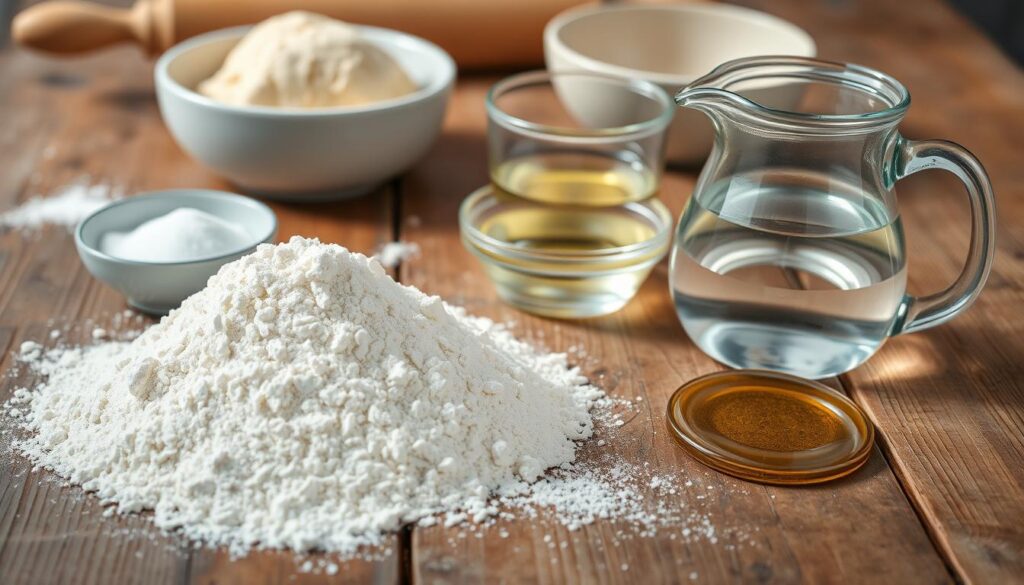
- All-purpose flour (2 cups)
- Salt for bread (1/2 teaspoon)
- Cold water (1 cup)
Choosing the right flour is key for the perfect texture. All-purpose flour is best, but you can try whole wheat or other grain flours for different tastes.
« The beauty of unleavened bread lies in its simplicity and versatility. » – Traditional Baker’s Wisdom
| Ingredient | Quantity | Purpose |
|---|---|---|
| All-Purpose Flour | 2 cups | Provides structure and base |
| Salt | 1/2 teaspoon | Enhances flavor |
| Cold Water | 1 cup | Binds ingredients |
Adding olive oil can make the bread richer and keep it moist. Being precise with your ingredients leads to consistent results every time.
Pro tip: Use fresh, high-quality ingredients for the best taste and texture in your unleavened bread.
Unleavened Bread Recipe: Kitchen Tools and Equipment Needed
To make unleavened bread, you need special tools and equipment. Your kitchen setup is key to making perfect wafers. They should be delicious and true to tradition.
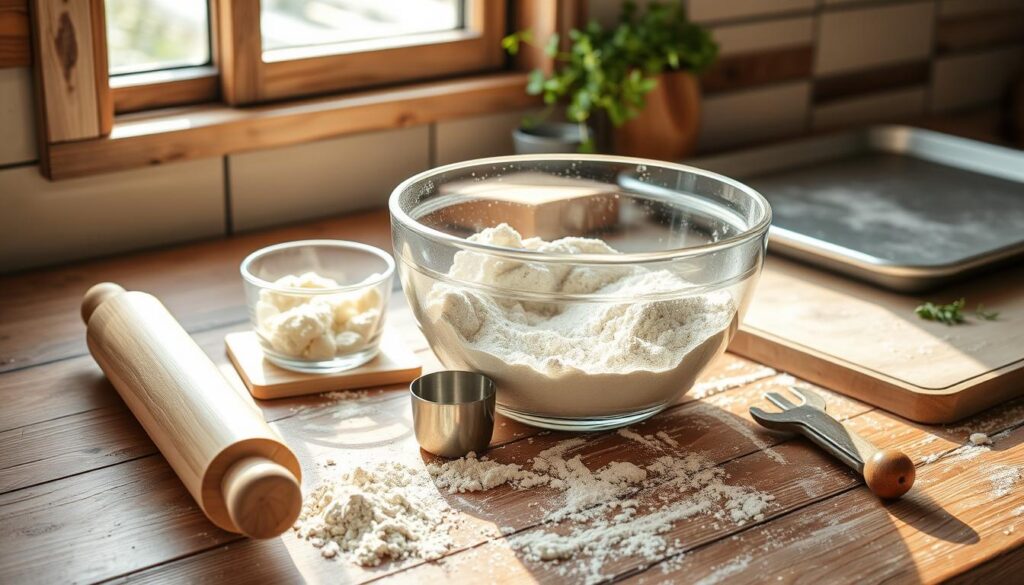
When you’re getting your cooking surfaces and tools ready, focus on a few important items. These items will make the bread-making process easy and fun.
Essential Preparation Tools
- Large mixing bowl
- Rolling pin
- Measuring cups and spoons
- Sharp knife or pizza cutter
- Fork for pricking dough
Cooking Surfaces and Temperature Control
The right cooking surface is crucial for your unleavened bread’s texture and taste. A cast iron skillet or griddle is perfect for stovetop cooking.
| Cooking Surface | Temperature | Cooking Time |
|---|---|---|
| Cast Iron Skillet | 400°F | 5-8 minutes |
| Griddle | 400°F | 5-8 minutes |
| Baking Sheet | 400°F | 5-8 minutes |
Before cooking, prick each wafer 2-3 times with a fork. This stops bubbling and cooks the bread evenly.
« The right tools transform simple ingredients into culinary art. » – Traditional Baker’s Wisdom
Use a skillet, griddle, or baking sheet, but keep the temperature at 400°F. Your tools are your allies in making tasty, traditional unleavened bread.
Unleavened Bread Recipe: Step-by-Step Instructions
Making unleavened bread is easier than you think. This recipe will show you how to make delicious bread step by step.
First, prepare your ingredients. You’ll need:
- 2 cups all-purpose flour
- 1/2 teaspoon salt
- 1/2 cup water
Mix the dry ingredients in a big bowl. Precision is key in traditional bread making. Make a small well in the flour, then add water slowly while stirring.
« Baking is an art that requires patience and attention to detail. » – Traditional Baker’s Wisdom
Knead the dough for 3-5 minutes until it’s smooth and elastic. Aim for a dough that’s not too sticky or too dry. Split the dough into 8-10 small balls, each about 2 inches big.
- Roll out each dough ball into thin circles
- Pierce each round with a fork about 25 times
- Ensure even thickness for consistent cooking
To cook, you can use a skillet or oven. For a skillet, cook each side for 2 minutes at high heat. For an oven, bake at 475°F for 3-4 minutes per side.
Your bread is done when it’s light golden and has crisp edges. Each matzah has about 63 calories, making it a healthy base for meals.
Unleavened Bread Recipe: Cooking Methods: Stovetop vs. Oven Baking
When making unleavened bread, you can choose between stovetop and oven baking. Each method has its own benefits. They help you make delicious, traditional flatbread with different textures and tastes.
Deciding between stovetop and oven baking depends on your kitchen, time, and taste. Let’s look at the details of each method for unleavened bread.
Stovetop Technique Tips
Stovetop cooking is fast and lets you control the heat well. For the best results:
- Use a cast-iron skillet or heavy-bottomed pan
- Maintain medium-high heat
- Preheat the pan for 3-5 minutes before cooking
- Cook each side for approximately 1-2 minutes
Oven Baking Guidelines
Oven baking cooks the bread evenly. Here are some important tips:
- Preheat the oven to 400°F (200°C)
- Use a baking sheet or stone for consistent heat distribution
- Bake for about 3-4 minutes per side
- Watch carefully to prevent burning
Temperature and Timing Considerations
The cooking method greatly affects the bread’s texture and taste. It’s all about finding the right balance of heat and time. You want a golden-brown outside and a soft inside.
« The art of unleavened bread lies in mastering heat and timing. » – Traditional Baker’s Wisdom
Try both stovetop and oven baking to find your favorite way to make unleavened bread.
Unleavened Bread Recipe: Texture and Consistency Tips for Best Results
To get the perfect bread texture, focus on dough consistency and baking methods. Success with unleavened bread comes from knowing how ingredients work together and mastering key steps.
Key Factors for Ideal Dough Consistency
- Knead the dough for 5-7 minutes to develop proper gluten structure
- Aim for a smooth, elastic texture that’s soft and pliable
- Allow dough to rest 30 minutes for optimal tenderness
Working with dough, temperature and hydration are key for texture. Warm water activates gluten, making the dough more elastic. Use water between 100-110°F for the best results.
« The secret to great unleavened bread lies in understanding your dough’s personality. » – Traditional Baker’s Wisdom
Baking Tips for Perfect Texture
| Technique | Impact on Bread Texture |
|---|---|
| Roll to ⅛ inch thickness | Ensures even cooking and crisp edges |
| Cook 2-3 minutes per side | Creates golden surface with slight puffing |
| Use medium-high heat | Prevents toughness and promotes tender interior |
Look for visual signs while cooking: your bread should have light golden spots and stay soft. Don’t overcook, as it can make the bread dry and tough.
Troubleshooting Texture Issues
- If dough feels too dry, add water little by little
- For sticky dough, dust with flour carefully
- Adjust kneading time to improve gluten development
With practice and patience, you’ll get the hang of making perfect unleavened bread. Each batch teaches you more about dough handling and its unique traits.
Unleavened Bread Recipe: Serving Suggestions and Pairings
Unleavened bread is a blank canvas for cooking. It can turn a simple dish into a thrilling meal. Whether you’re making a traditional dish or trying something new, these pairings will make your meal special.
Traditional Accompaniments
During Passover, unleavened bread is key. Here are some classic ways to serve it:
- Charoset (sweet fruit and nut mixture)
- Bitter herbs like Maror
- Gefilte fish
- Lamb shank bone
Modern Serving Ideas
Try these creative ways to enjoy unleavened bread:
- Dipping Delights: Serve with hummus, olive oil, or baba ganoush
- Brush with melted garlic butter or herb-infused olive oil
- Use as a pizza crust alternative
- Create sandwich wraps
- Sprinkle with fresh herbs like rosemary or thyme
« Unleavened bread is not just a side dish, but a versatile ingredient that can transform your meal. » – Culinary Experts
Enjoy your unleavened bread warm or at room temperature. It’s great for any occasion. Try different pairings to find your favorite!
Storage and Preservation Methods
Keeping your unleavened bread fresh is key. Knowing how to store it right can make it last longer. This helps keep your homemade bread tasting great.
There are several ways to store your unleavened bread. Here are some tips to keep it fresh:
- Room temperature storage in an airtight container for 2-3 days
- Freezing for extended preservation up to 2 months
- Using a cool, dry place to maintain optimal freshness
« The secret to great bread is not just in making it, but in storing it correctly. » – Artisan Baker’s Wisdom
For short-term storage, follow these tips:
- Cool the bread completely before storing
- Wrap in clean cloth or parchment paper
- Store in a sealed container at room temperature
For long-term storage, freezing is best. Wrap each piece in plastic wrap, then in a freezer-safe bag. This keeps it from getting freezer burn and keeps its texture.
| Storage Method | Duration | Best Practices |
|---|---|---|
| Room Temperature | 2-3 days | Use airtight container |
| Freezer Storage | Up to 2 months | Wrap individually, use freezer bag |
Pro tip: When reheating frozen unleavened bread, thaw at room temperature and warm briefly in an oven at 350°F to restore its original texture.
Variations and Creative Adaptations
Exploring unleavened bread variations opens up a world of culinary creativity. You can transform a simple recipe into an exciting flavor experience by experimenting with different ingredients and techniques.
Herb and Spice Additions
Elevate your flavored flatbread by incorporating fresh herbs and aromatic spices. These simple additions can dramatically change the taste profile of your unleavened bread.
- Mediterranean blend: Rosemary, thyme, and oregano
- Middle Eastern inspiration: Za’atar and sumac
- Spicy kick: Crushed red pepper and garlic powder
- Aromatic mix: Cumin, coriander, and dried parsley
Alternative Flour Options
Experimenting with different flours can create unique textures and nutritional profiles for your unleavened bread.
| Flour Type | Flavor Profile | Nutritional Benefit |
|---|---|---|
| Whole Wheat | Nutty, robust | High in fiber |
| Almond Flour | Subtle, sweet | Gluten-free, protein-rich |
| Chickpea Flour | Earthy, dense | High protein, low carb |
| Coconut Flour | Mild coconut hint | Low carbohydrate |
Pro tip: When using alternative flours, you might need to adjust liquid ratios to achieve the perfect consistency.
« Bread is the king of the table and all else is merely an accompaniment. » – Auguste Escoffier
Your unleavened bread journey is limited only by your imagination. Embrace creativity and discover your unique flavor combinations!
Conclusion
Making homemade unleavened bread connects you to a long history of cooking. It’s not just about making a recipe. It’s about joining a tradition that spans generations.
Quick bread recipes open doors to global cooking traditions. They let you explore different cultures through food.
Unleavened bread is simple yet versatile. It can be a crisp tortilla or a soft Roti. Each one connects you to ancient cooking ways.
When you make unleavened bread, you explore different cultures. From Jewish Matzah to Australian Damper, these recipes are more than food. They connect us to our past.
Every slice of bread you make tells a story. By mastering these recipes, you’re keeping a tradition alive. Your bread is a delicious link to our shared history.
For more delecious recipes :
Bread Roll Recipe | Soft, Fluffy, and Easy to Make : « Unleavened Bread Recipe: Simple, Traditional, and Quick to Make »